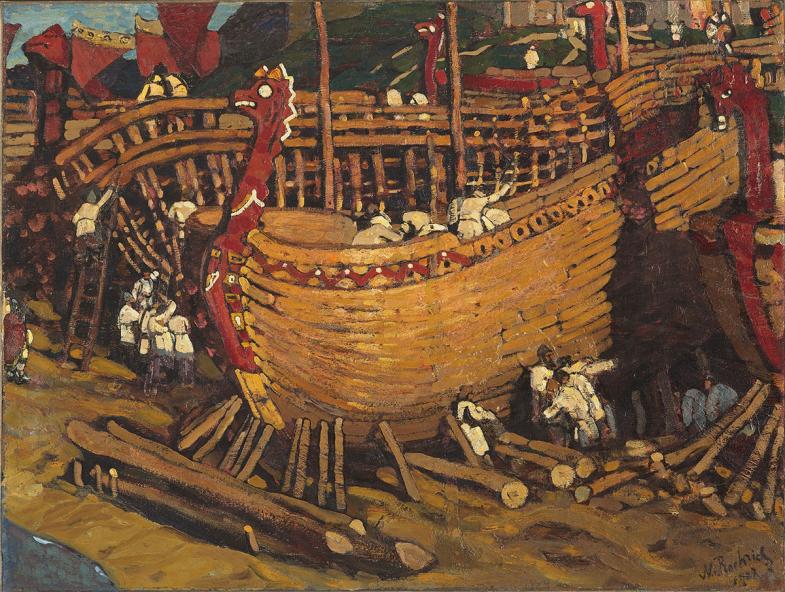The picture conveys the motif of an ancient Slavic settlement. Here, Roerich tries not only to document the features of the past, but also the live and holistic world of history, the worldview of our ancestors. The painting “Building Boats” depicts the work of shipwrights on the shore, near the walls of an ancient town. The picture is painted using broad and free brushstrokes in golden-ochreous tones. The exposition is based on the diagonal principle. Direct perspective is absent – it seems to be put out of the canvas. Roerich created a lively ambiance of construction, where, it seems, we can hear the sound of axes, the fall of hewn logs and the voice of craftsmen. The effervescent, active atmosphere of construction is conveyed by the complex rhythm of figures in white robes. The picture is perceived as a hymn to human labor.
The theme of construction becomes one of the main for the artist and runs through all his work. In addition to different versions of the “Boats”, Roerich creates another dozen similar paintings – “Building a City”. Subsequently, in the 1920s and 1930s, the theme of the city of the future was repeated in his work many times. The artist created the paintings “Zvenigorod”, “The Silhouettes of the City of the Future” and “The Pilgrim of the City of Light”. For the artist, all Russia is in constant construction. “Where you build, you do not destroy. Each structure is the multiplication of the welfare”, Nikolay Roerich said.
Painting the theme of the prehistory, Roerich managed to impress the viewer with the sensation of the primordiality of the fresh and pure world depicted by him. “Building Boats” and other pictures from the “Slavs” suite – “Building a City”, “Slavs on the Dnieper River”, “Conceiving Clothes”, “Collecting the Tribute” – are based on deep knowledge of historical material. Everything is ethnographically genuine in them, everything is determined by the vast experience of an archaeologist, a discoverer of the indisputable traces of material culture.


